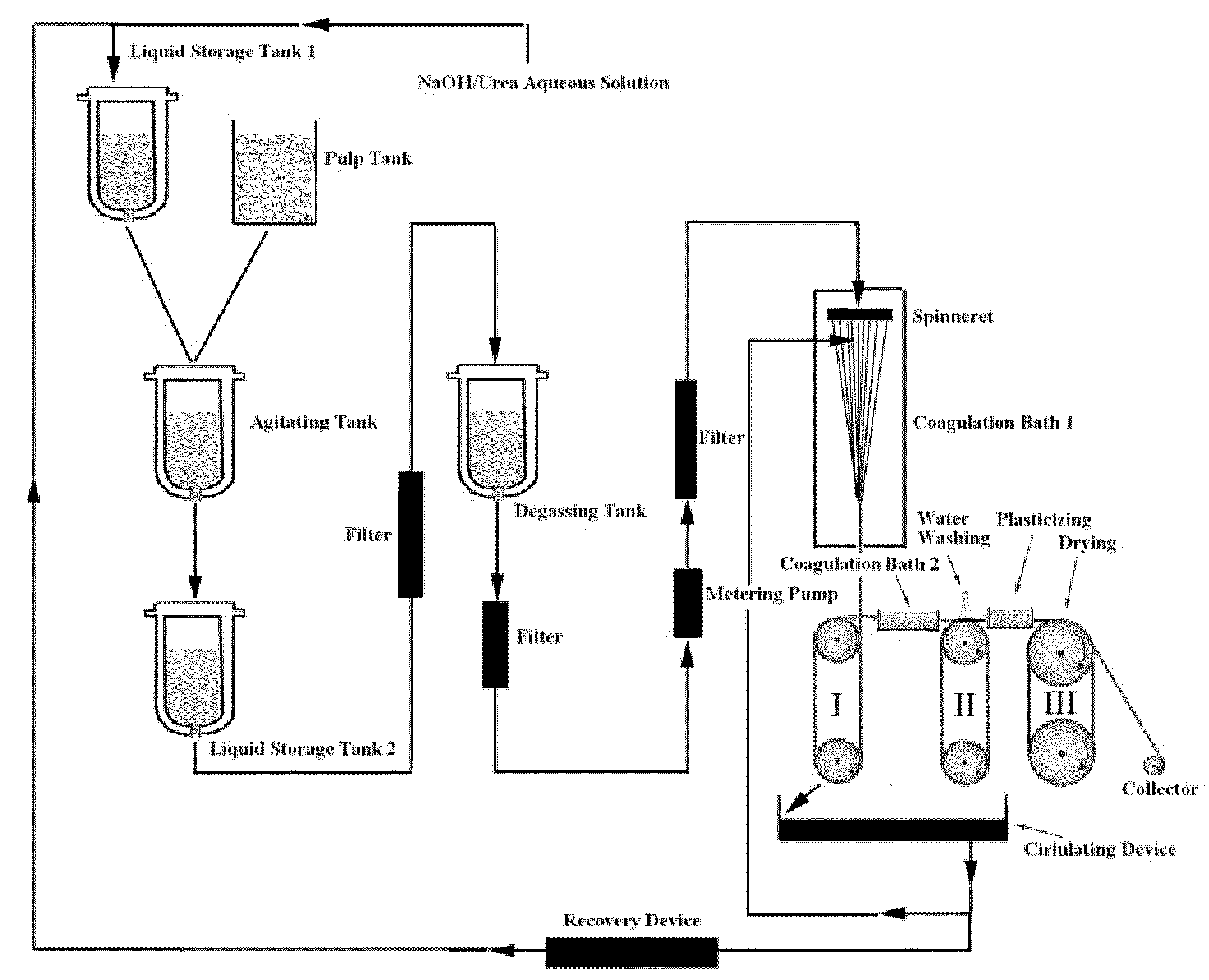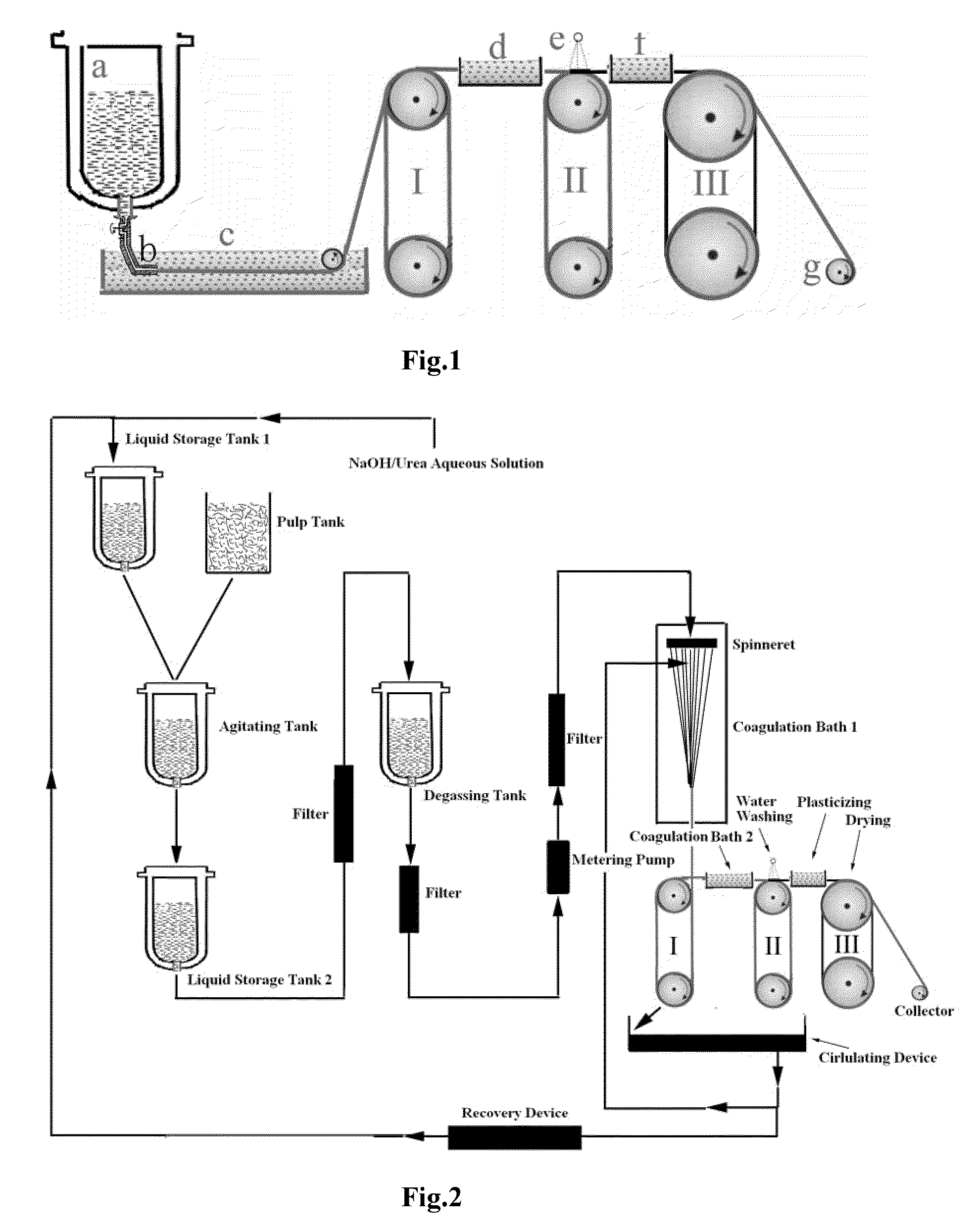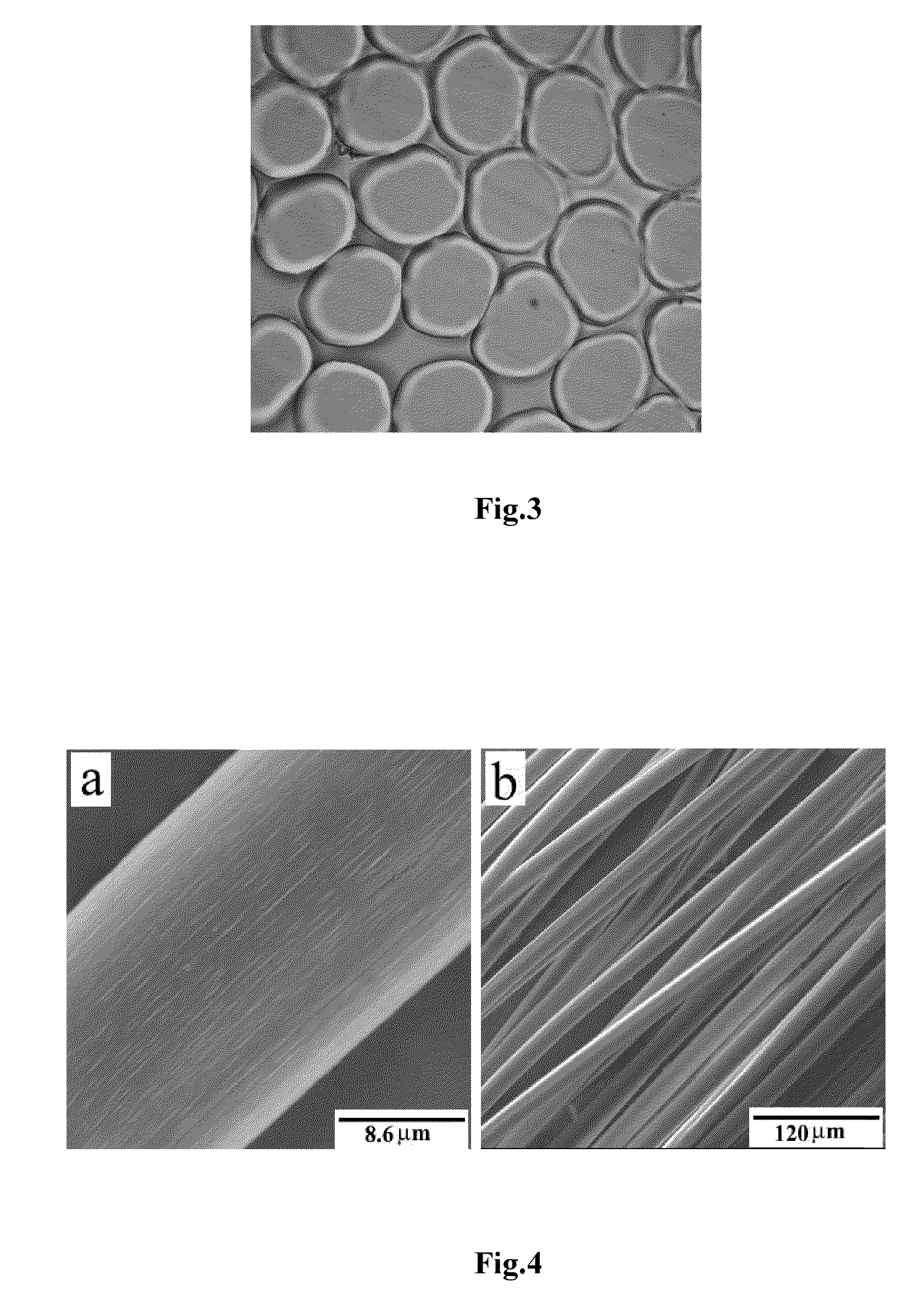Method for Preparing Regenerated Cellulose Fiber by Two-Step Coagulating Bath Process
a coagulation bath and cellulose fiber technology, applied in the direction of liquid-gas reaction process, chemical/physical/physico-chemical process, chemical apparatus and processes, etc., can solve the problems of high cost, difficult recovery of solution, and insufficient utilization of cellulose in chemical industry
- Summary
- Abstract
- Description
- Claims
- Application Information
AI Technical Summary
Benefits of technology
Problems solved by technology
Method used
Image
Examples
example 1
[0045]3 kg of a mixed aqueous solution of 7.0 wt % NaOH / 12 wt % urea (analytically pure) was pre-cooled to −12° C., then 151 g of dry cotton linter cellulose pulp (having a polymerization degree of 620) was added immediately, while stirring under 1000 rpm at room temperature for 20 minutes to dissolve the cellulose completely. A transparent cellulose solution was obtained by deaerating in a self-made deaeration tank under vacuum at 5° C. for 12 hours. The concentrated cellulose solution was pressed to pass through a 0.12 mm×30 holes spinneret of a spinning machine and entered into a first coagulation bath for solidification and regeneration, wherein the bath was a mixed aqueous solution of 8 wt % H2SO4 / 12 wt % Na2SO4, and the bath temperature was 10° C. Subsequently, the cellulose filaments entered into a second coagulation bath for regeneration, wherein the bath was an aqueous solution of 4 wt % H2SO4, and the bath temperature was 15° C. The stretched and regenerated cellulose fila...
example 2
[0046]3 kg of a mixed aqueous solution of 7.0 wt % NaOH / 12 wt % urea (industrially pure) was pre-cooled to −12° C., and then 145 g of dry cotton linter cellulose pulp (having a polymerization degree of 620) was added immediately, while stirring under 1000 rpm at room temperature for 20 minutes to dissolve the cellulose completely. A transparent cellulose solution was obtained by deaerating in a self-made deaeration tank under vacuum at 5° C. for 12 hours. The concentrated cellulose solution was pressed to pass through a 0.12 mm×30 holes spinneret of a spinning machine and entered into a first coagulation bath for solidification and regeneration, wherein the bath was a mixed aqueous solution of 7.6 wt % H2SO4 / 12.5 wt % Na2SO4, and the bath temperature was 15° C. Subsequently, the cellulose filaments entered into a second coagulation bath for regeneration, wherein the bath was an aqueous solution of 4 wt % H2SO4, and the bath temperature was 15° C. The stretched and regenerated cellul...
example 3
[0047]3 kg of a mixed aqueous solution of 7.5 wt % NaOH / 11 wt % urea (industrially pure) was pre-cooled to −12° C., and then 130 g of dry cotton linter cellulose pulp (having a polymerization degree of 440) was added immediately, while stirring under 700˜1000 rpm at room temperature for 15 minutes to dissolve cellulose completely. A transparent cellulose solution was obtained by deaerating in a self-made deaeration tank under vacuum at 5° C. for 5 hours. The concentrated cellulose solution was pressed to pass through a 0.12 mm×30 holes spinneret of a spinning machine and entered into a first coagulation bath for solidification and regeneration, wherein the bath was a mixed aqueous solution of 8.6 wt % H2SO4 / 10.5 wt % Na2SO4, and the bath temperature was 10° C. Subsequently, the cellulose filaments entered into a second coagulation bath for regeneration, wherein the bath was an aqueous solution of 5 wt % H2SO4, and the bath temperature was 10° C. The stretched and regenerated cellulo...
PUM
| Property | Measurement | Unit |
|---|---|---|
| Temperature | aaaaa | aaaaa |
| Temperature | aaaaa | aaaaa |
| Temperature | aaaaa | aaaaa |
Abstract
Description
Claims
Application Information
 Login to View More
Login to View More - R&D
- Intellectual Property
- Life Sciences
- Materials
- Tech Scout
- Unparalleled Data Quality
- Higher Quality Content
- 60% Fewer Hallucinations
Browse by: Latest US Patents, China's latest patents, Technical Efficacy Thesaurus, Application Domain, Technology Topic, Popular Technical Reports.
© 2025 PatSnap. All rights reserved.Legal|Privacy policy|Modern Slavery Act Transparency Statement|Sitemap|About US| Contact US: help@patsnap.com



